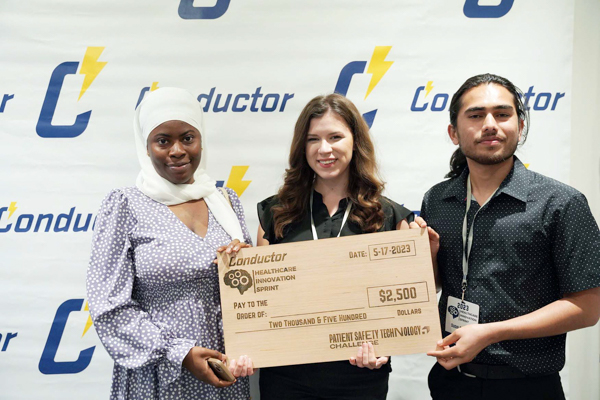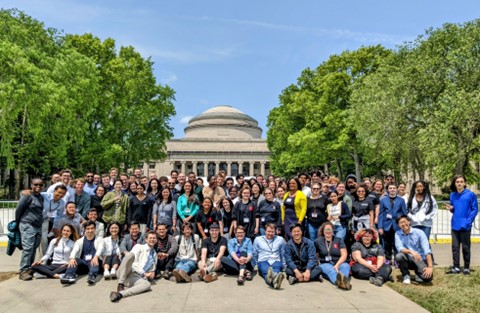Project & Program Updates
Patient Safety Technology Challenge Highlights from May Competitions
During May, the Patient Safety Technology Challenge saw some of its sponsored competitions run their program and award new patient safety winners.
The first of these events, the Patient Safety Technology Challenge-sponsored Healthcare Innovation Sprint co-hosted by The Conductor, Arkansas IDeA Network of Biomedical Research Excellent (INBRE), Conway Regional Health System, University of Central Arkansas, and BioVentures, took place on campus at the University of Central Arkansas. The competition guided students through a four-day training program, May 15th through the 18th, where they learned about healthcare innovation and patient safety.
The finale was a demo night where students pitched their innovative tech-enabled patient safety solutions to a panel of five judges which included Dr. Fuchiang (Rich) Tsui, director of Tsui Laboratory and endowed chair in Biomedical Informatics and Entrepreneurial Science at Children's Hospital of Philadelphia Research Institute. Dr. Tsui serves on the Patient Safety Technology Challenge advisory board.
The winning idea was formed by a team of three students, who received a $2,500 prize to help them scale their innovative tech-enabled patient safety solution, Uroglo.
Uroglo focuses on the early detection of catheter-associated urinary tract infections (CAUTI). The novel solution they dreamt up coats the inside of urine collection bags with a hydrogel infused with bacteriophages that will glow under UV when harmful bacteria that cause CAUTI are identified.
The second event in May was MIT's Critical Datathon which provided a unique lens of health equity to the Patient Safety Technology Challenge. The datathon paired students from underrepresented groups in the Boston-area to health equity investigators across several disciplines, including medicine, nursing, pharmacy, social work, and health equity.
The student–professional teams were charged with identifying correction models for pulse oximetry; patients of color often experience falsely elevated oxygen readings due to limitations in how pulse oximeters have been designed.
At the end, the teams presented what they were able to accomplish and the challenges they faced. No winner or prize money was given, instead this was an opportunity for acquiring knowledge, collaborating, learning new skills, and presenting what they were able to achieve as a team and what they see as opportunities for the future.
Read about past competitions involved in the Patient Safety Technology Challenge at the Patient Safety Technology Challenge website.Related Posts
By accepting you will be accessing a service provided by a third-party external to https://www.jhf.org/

